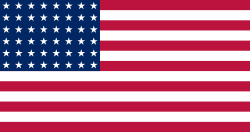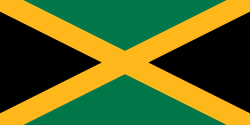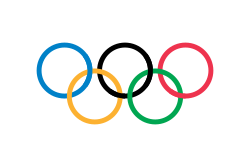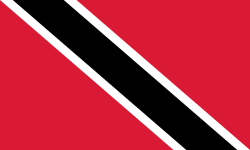Andy Stanfield
| Andy Stanfield | |||||||||||||
| Voller Name | Andrew William Stanfield | ||||||||||||
| Nation | |||||||||||||
| Geburtstag | 29. Dezember 1927 | ||||||||||||
| Geburtsort | Washington, D.C. | ||||||||||||
| Größe | 187 cm | ||||||||||||
| Gewicht | 79 kg | ||||||||||||
| Sterbedatum | 15. Juni 1985 | ||||||||||||
| Sterbeort | Livingston | ||||||||||||
| Karriere | |||||||||||||
|---|---|---|---|---|---|---|---|---|---|---|---|---|---|
| Disziplin | Sprint | ||||||||||||
| Bestleistung | 10,3 s (100 m) / 20,5 s (200 m) | ||||||||||||
| Medaillenspiegel | |||||||||||||
| |||||||||||||
| |||||||||||||
Andrew William „Andy“ Stanfield (* 29. Dezember 1927 in Washington, D.C.; † 15. Juni 1985 in Livingston, New Jersey) war ein US-amerikanischer Sprinter und Olympiasieger.
Als Kind zog er mit seinen Eltern nach Jersey City im Hudson County in New Jersey. Schon an der High School erkannte man, was für ein talentierter Athlet er war, besonders im Sprint und im Weitsprung. Nach seiner Dienstzeit bei der Armee ging er 1948 an die Seton Hall University und bereits im Folgejahr gewann er seine ersten nationalen Titel im 100- und 200-Meter-Lauf, 1950 über 60 Yards, 1951 im Weitsprung, 1952 wieder über 200 Meter und 1953 über 220 Yards. In der gleichen Zeit gewann er auch neun IC4A Titel.
International lagen seine Stärken eher im 200-Meter-Lauf. 1951 brach er den durch Barney Ewell aufgestellten Weltrekord über 200 Meter mit einer eigenen Zeit von 20,6 s, die er 1952 und 1956 bestätigte.
Als Inhaber des Weltrekords startete er bei den Olympischen Spielen 1952 in Helsinki und gewann die Goldmedaille im 200-Meter-Lauf vor den beiden anderen US-Amerikanern Thane Baker (Silber) und James Gathers (Bronze), sowie die Mannschaftsgoldmedaille in der 4-mal-100-Meter-Staffel zusammen mit seinen Teamkollegen Dean Smith, Harrison Dillard und Lindy Remigino, vor den Teams aus der Sowjetunion (Silber) und Ungarn (Bronze). Bei den Olympischen Spielen 1956 in Melbourne versuchte er seinen Titel zu verteidigen, gewann aber nur die Silbermedaille über 200 Meter, zwischen den beiden anderen US-Amerikanern Bobby Morrow (Gold) und Thane Baker (Bronze).
Weblinks
- Andy Stanfield in der Datenbank von Olympedia.org (englisch)
| Personendaten | |
|---|---|
| NAME | Stanfield, Andy |
| ALTERNATIVNAMEN | Stanfield, Andrew William (vollständiger Name) |
| KURZBESCHREIBUNG | US-amerikanischer Sprinter und Olympiasieger |
| GEBURTSDATUM | 29. Dezember 1927 |
| GEBURTSORT | Washington, D.C. |
| STERBEDATUM | 15. Juni 1985 |
| STERBEORT | Livingston, New Jersey |
Auf dieser Seite verwendete Medien
Pictograms of Olympic sports – . This is an unofficial sample picture. Images of official Olympic pictograms for 1948 Summer Olympics and all Summer Olympics since 1964 can be found in corresponding Official Reports.
Autor/Urheber: B1mbo, Lizenz: CC BY-SA 2.5
Zeichnung einer Goldmedaille, basierend auf Olympic rings.svg.
Autor/Urheber: B1mbo, Lizenz: CC BY-SA 2.5
Zeichnung einer Silbermedaille, basierend auf Olympic rings.svg.
Autor/Urheber: B1mbo, Lizenz: CC BY-SA 2.5
Zeichnung einer Bronzemedaille, basierend auf Olympic rings.svg.
Olympic Rings without "rims" (gaps between the rings), As used, eg. in the logos of the 2008 and 2016 Olympics. The colour scheme applied here was specified in 2023 guidelines.
Olympic Rings without "rims" (gaps between the rings), As used, eg. in the logos of the 2008 and 2016 Olympics. The colour scheme applied here was specified in 2023 guidelines.
US Flag with 45 stars. In use 4 July 1896–3 July 1908. Created by jacobolus using Adobe Illustrator, and released into the public domain. This flag was used during the Spanish-American War.
US Flag with 45 stars. In use 4 July 1896–3 July 1908. Created by jacobolus using Adobe Illustrator, and released into the public domain. This flag was used during the Spanish-American War.
US Flag with 48 stars. In use for 47 years from July 4, 1912, to July 3, 1959.
Flag of Italy from 1946 to 2003, when exact colors were specified.
(c) I, Cmapm, CC BY-SA 3.0
The flag of the Soviet Union (1955-1991) using a darker shade of red.

(c) I, Cmapm, CC BY-SA 3.0
The flag of the Soviet Union (1955-1991) using a darker shade of red.

Olympische Flagge
Flagge des Vereinigten Königreichs in der Proportion 3:5, ausschließlich an Land verwendet. Auf See beträgt das richtige Verhältnis 1:2.
Die Olympiaflagge der gesamtdeutschen Mannschaft von 1960 und 1964, sowie beider deutschen Mannschaften 1968.
Die Olympiaflagge der gesamtdeutschen Mannschaft von 1960 und 1964, sowie beider deutschen Mannschaften 1968.
Flagge Trinidad und Tobago
The Canadian Red Ensign used between 1921 and 1957.
This image has compared for accuracy (mainly colors) using an image from World Statesmen. The only change is making the maple leaves green from red. This image has compared for accuracy (mainly colors) using an image from World Statesmen. The most recent version of this image has changed the harp into one with a female figure; see [http://flagspot.net/flags/ca-1921.html FOTW



















